How to Remove Hair from a Blocked Bath Drain
Learn how to tackle hair-clogged bathtub drains with ease using our comprehensive DIY guide. From mechanical methods to natural solutions, find out how to keep your drains flowing freely without calling a plumber.
Dealing with a blocked bath drain can be frustrating—and hairy. Every homeowner or renter has been there: water pooling at your feet in the shower, a bathtub that won’t drain quickly, and the telltale sign of a hair clog causing issues with your plumbing . While shower and bathtub drains are common culprits, hair clogs can also affect bathroom sink drains.
In this guide, we’ll walk you through the nitty-gritty of removing hair from a blocked bathtub drain, ensuring your tub drain is free from obstruction, and your shower water can flow freely. So, roll up your sleeves and get into the world of drains, hair, and the best DIY solutions you can use.
Why Does Hair Clog Your Bathtub Drain?
Hair clog issues are as old as indoor plumbing itself. Long hair, short hair, pet hair — all the hair finds its way into our drains, often leading to stubborn blockages. When mixed with soap scum and other debris, a clogged tub drain or shower drain can quickly become a homeowner’s nightmare. But, with a few tools and some know-how, hair clogs can be a thing of the past.
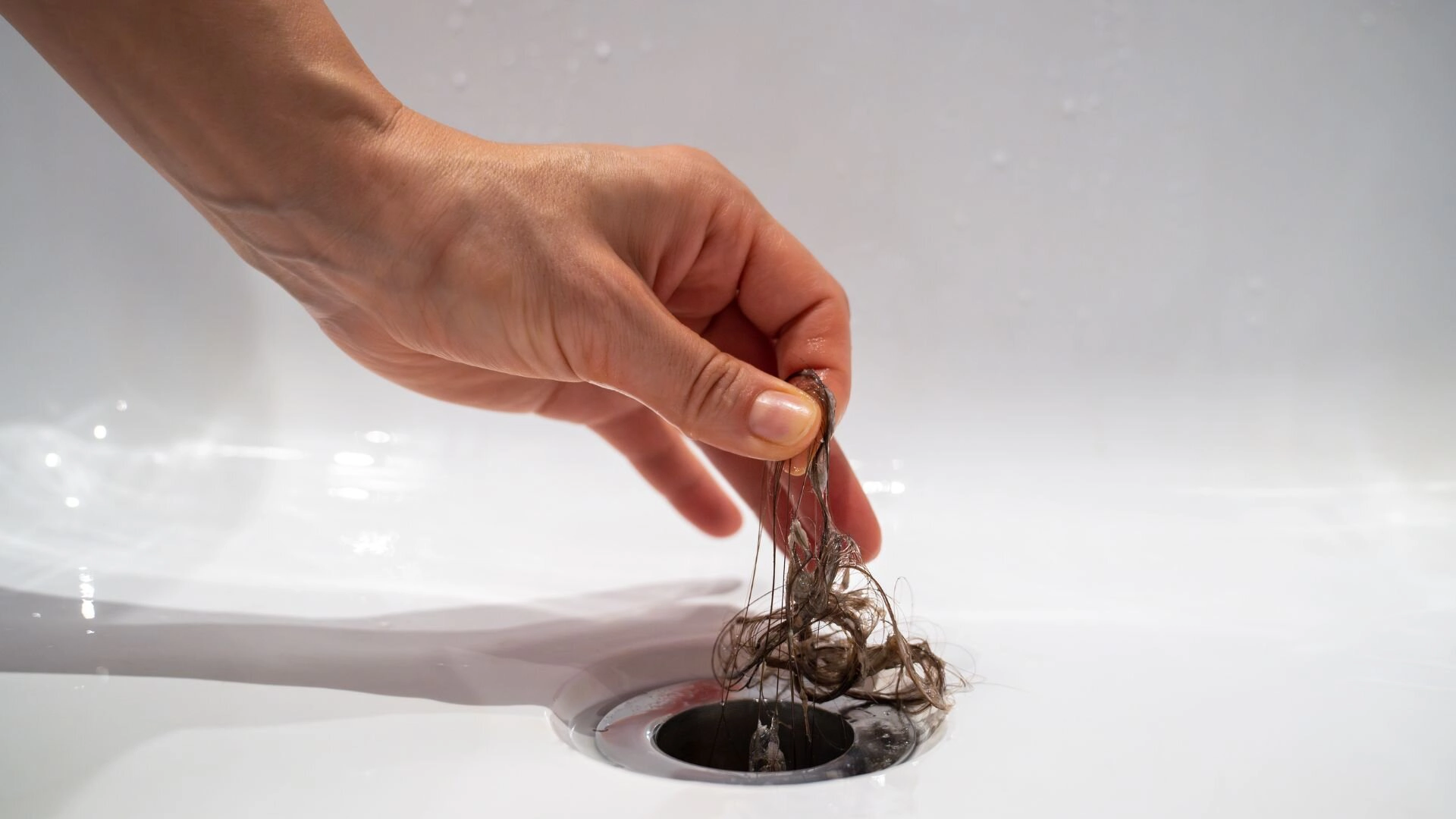
Tools and Materials you need
Before we tackle the hair clogs, let’s gear up. Here’s what you’ll need:
- Drain snake (manual or electric drain snakes)
- Needle nose pliers or wire hanger (unwound)
- Baking soda (roughly a cup)
- White vinegar
- Boiling water
- Rubber gloves (to wear gloves is to love your hands)
- Cup plunger (for sinks) or toilet plunger (for deeper clogs)
You can find these tools at your local hardware store or online. Now, let’s get to work.
Method 1: Mechanical Removal
Removing hair from the drain doesn’t always require fancy tools or harsh chemicals; sometimes, it requires manual effort and determination. Begin the task by sliding on a pair of rubber gloves. These keep your hands clean and protect you from unseen bacteria lurking in the drain.
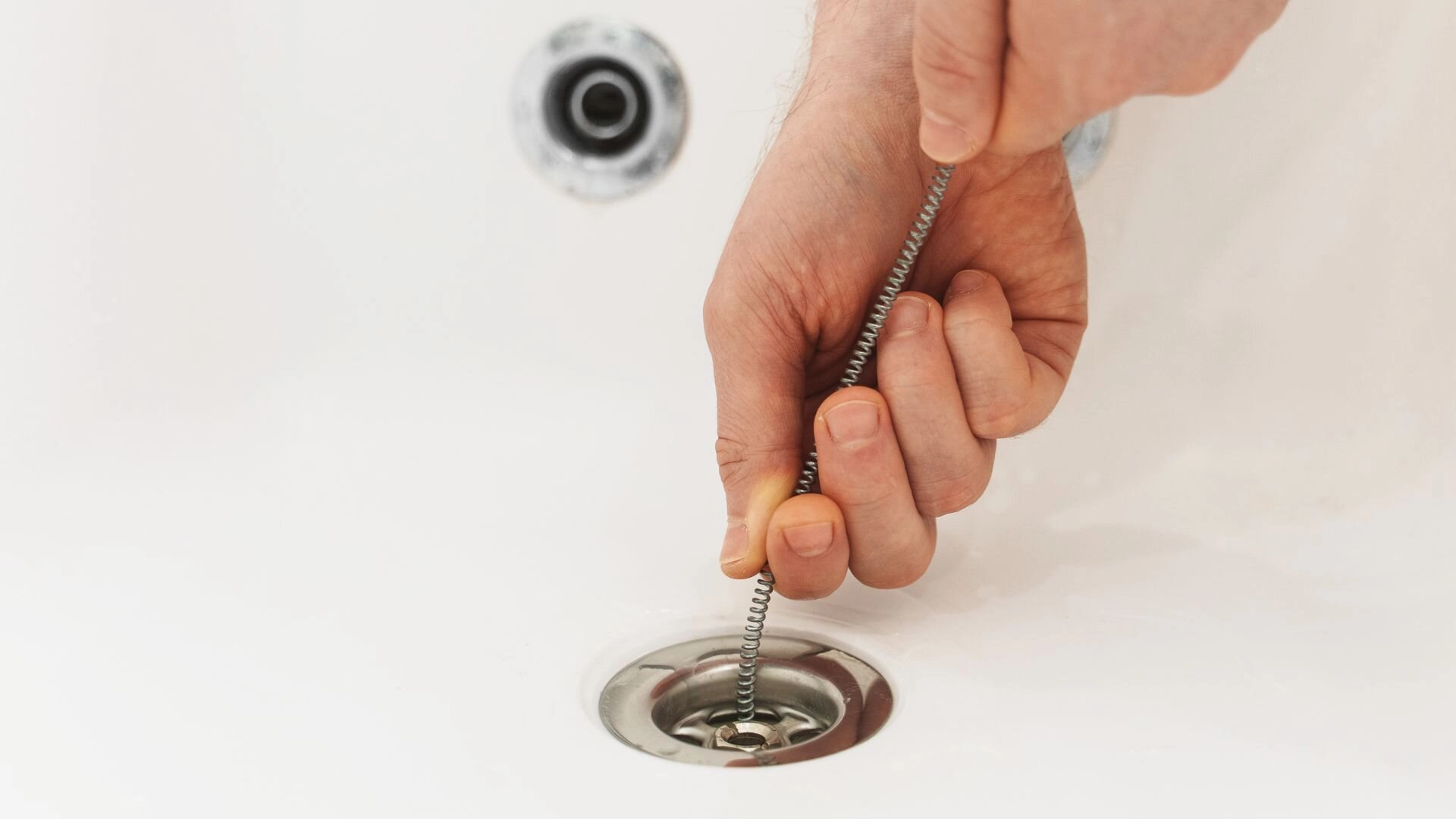
Gaining Access to the Clog
Now, take a look at your tub drain. If it includes a removable cover, lift it off. This might afford immediate access to the clog, often found just below the surface.
Retrieving the Hair
Next, you’ll need something to reach the drain and fish out the hair. An unwound wire hanger works well for this purpose, or you could use needle nose pliers if you have them. Carefully slide your chosen tool into the drain until you feel it latch onto the hair clog.
Removing the Clog
With a firm but gentle touch, draw the tool upwards. You’ll likely find a clump of hair emerging from the drain. This might be unpleasant, but it’s a sure sign of progress. Continue this process, removing as much hair as possible with each attempt.
Tackling Stubborn Blockages
At times, hair clogs can be persistent and settle deeper within the drain, beyond the reach of pliers or a simple wire hanger. When faced with such a scenario, it’s time to employ a drain snake. Feed the snake down the drain, turning it as you go to ensure it grips the blockage. Once you feel resistance, indicating you’ve hooked the clog, gently extract the snake from the drain. The offending hair should follow, clearing the pathway for water to drain smoothly again.
Method 2: Natural Solutions
If you’re wary of chemical drain cleaners, a natural solution of baking soda and vinegar can be surprisingly effective. This natural duo effectively clears out drain clogs and is safer for your pipes and the environment.
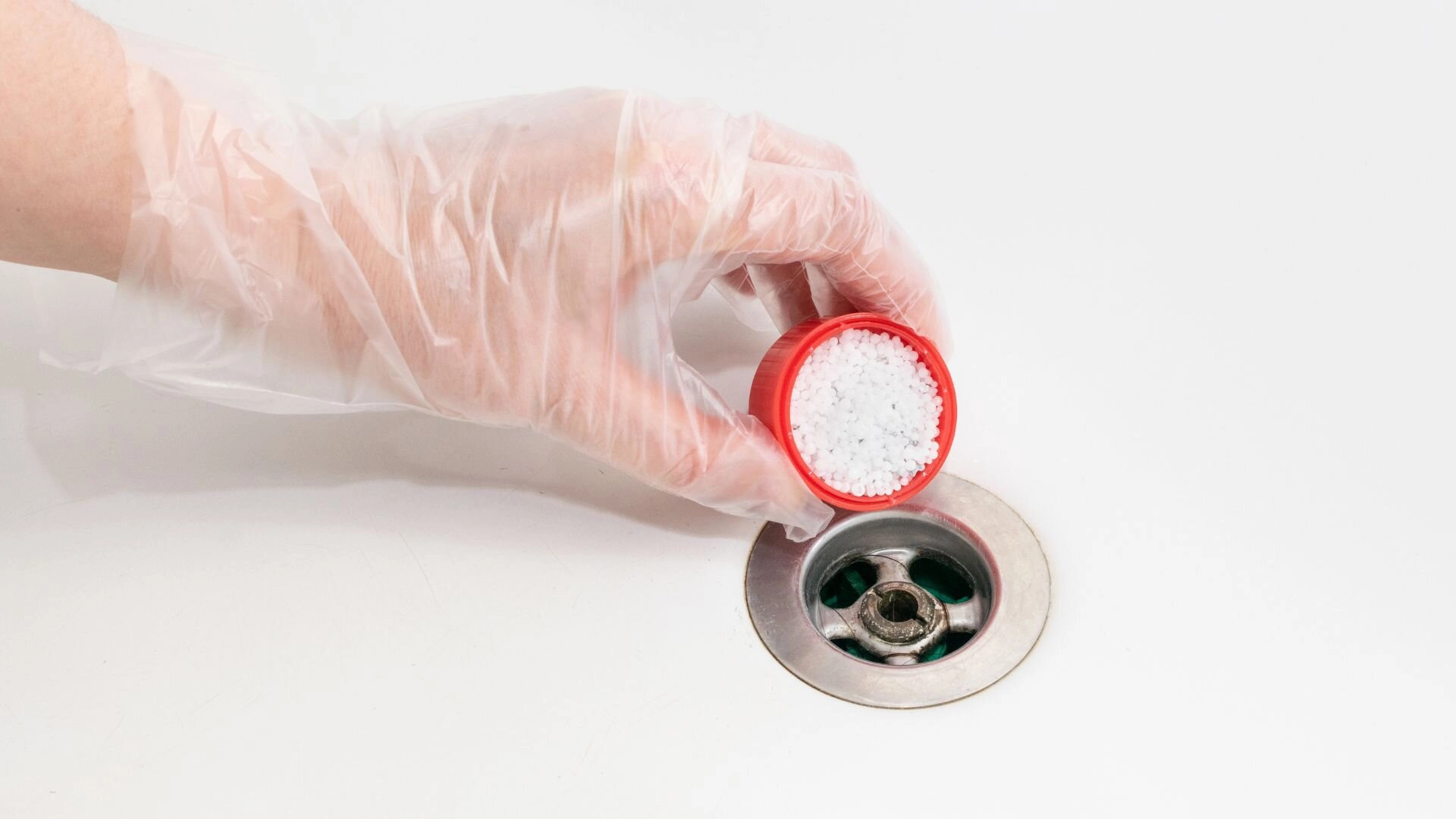
Applying the Baking Soda
To begin, arm yourself with a cup of baking soda. Pour it straight into the drain opening, ensuring it goes as far down as possible. This ordinary household powder will serve as the base for the clog-busting reaction .
Activating with Vinegar
Next, it’s time to introduce vinegar to the equation. Equal parts of vinegar poured directly on top of the baking soda will trigger a fizzy reaction. As the vinegar contacts the baking soda, you’ll hear bubbling and sizzling sounds—a clear indicator that the natural chemical reaction is hard at work, dissolving the hair and gunk, causing the blockage.
Letting the Mixture Work
After adding the vinegar, allow this natural concoction to work its magic for about an hour. During this time, the mixture will break down the materials in the clog, making it easier to flush away.
The Final Flush
Once the time has elapsed, it’s time to rinse everything down with warm or hot water. Boiling water is particularly effective as it helps to wash away the remnants of the dissolved clog, ensuring a clear path in the drain opening. This final flush not only clears away the hair, soap scum, and grime but also helps to wash away the vinegar and baking soda mixture, leaving you with a clean and clear drain .
Method 3: Plunging
Plunging might effectively tackle the stubborn clog when confronted with a hair blockage that seems resistant to other methods. This simple, age-old technique can be powerful but often overlooked in the modern quick-fix era.
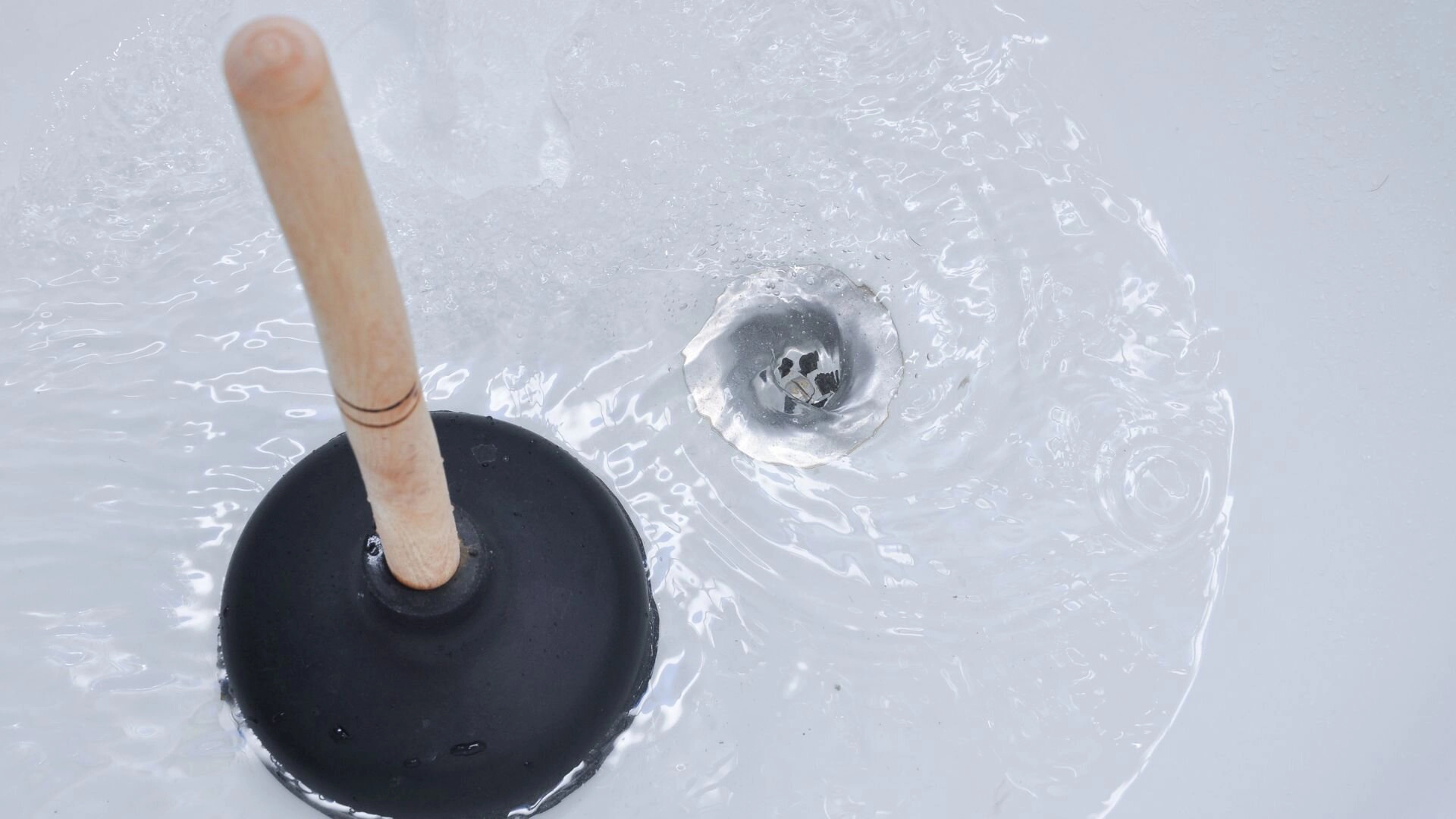
Preparing to Plunge
Start by adding a little water to the tub to submerge the plunger’s bottom part, creating a seal necessary for proper suction.
Executing the Technique
Apply a firm yet gentle force downward with the plunger securely positioned over the drain. The goal here is not brute strength but consistent pressure to coax the hair clog loose.
Observing the Results
As you press down on the plunger, the pressure builds within the pipe. This action can shift the clog, breaking it apart or moving it along the pipe where it can disperse. After several thrusts with the plunger, pause to see if the standing water begins to drain, indicating that the obstruction is moving.
Rinsing Away the Blockage
If water starts to swirl away, you’ve likely made progress. To help clear any residual material, pour hot water down the drain. This will help dissolve and flush out any remnants of the hair blockage and remove any soapy build-up that often accompanies such clogs.
Proactive Measures to Prevent Hair Clogs
In addition to these reactive measures, proactive steps can significantly reduce the likelihood of future hair clogs. A drain cover is an indispensable tool, capturing hair before it slips into the drain. By making it a routine to clear out this collected hair and dispose of it in the trash, you can prevent it from ever becoming a clog.
A preventative strategy for those with long hair could be as simple as brushing hair before showering and minimising loose strands.
When to Call a Professional
When DIY methods fall short, a professional plumber brings a level of diagnostic and repair proficiency unmatched by household remedies. They are equipped with specialised tools such as motorised drain augers, high-pressure water jetters, and video inspection equipment, enabling them to pinpoint the exact location and nature of the clog.
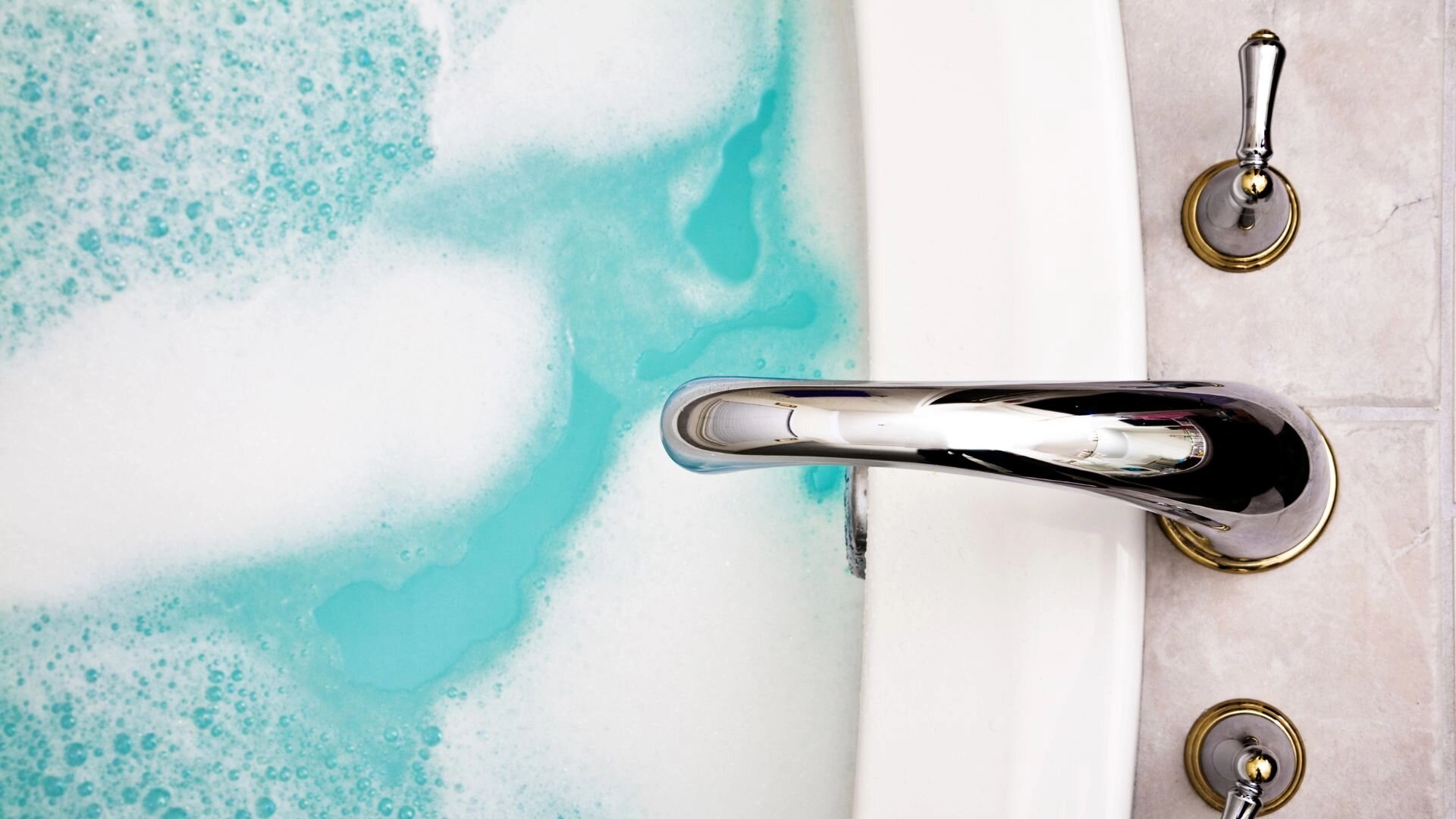
A professional plumber can offer insights into potential underlying issues that could be contributing to regular blockages, such as pipe corrosion, misaligned plumbing, or invasive tree roots . Identifying and addressing these root causes can help prevent future occurrences, saving you time and money in the long run.
Their expertise may also extend to recommending maintenance products and strategies that are safe for your plumbing system, helping to keep it functioning efficiently.
Calling in a professional not only resolves the immediate headache of a clogged drain but also serves as a proactive measure against potential plumbing emergencies . With their help, you can rest assured that your plumbing system is in good health, safeguarding your home against water damage and ensuring that your daily routines continue without interruption .
Say Goodbye To Stubborn Hair Clogs
Clogged drains are an inconvenience, but with the right approach, you can clear your drains of hair and keep things flowing smoothly.
Regular maintenance is vital, whether using the hand method to remove hair or combining baking soda, vinegar, and hot water. Don’t let a blocked drain ruin your day; with some know-how, you can keep your tub drain and shower drain clear and fully functional.
Patience and persistence go a long way when dealing with hair clogs. Use the methods outlined above to address your clogged drain, and don’t hesitate to contact a professional if the problem persists. Regular attention and preventative measures can help ensure that your shower and bath experiences remain relaxing and, most importantly, drain trouble-free.
Do you need help with your blocked bath in Sydney ? . Our blocked drains expert can get your bath draining properly quickly and hassle-free !
Hair Clogging Drains FAQs
What dissolves hair in a bathtub drain?
Liquid drain cleaners are a common choice for dissolving hair in a bathtub drain. These are formulated to break down organic matter like hair build-up.
However, they should be used cautiously as they can be harsh on your plumbing if overused. For a gentler approach, a mixture of baking soda and vinegar can help dissolve hair when followed by hot water to flush the mixture through the bathroom sink drain. Enzymatic drain cleaners are also effective; they use natural enzymes to eat away hair and other organic materials.
How do you get a stuck hair out of a bathtub drain?
If hair is stuck around the drain stopper, first remove the stopper according to the manufacturer’s instructions. Once you have access to the drain, you can use needle-nose pliers or a bent wire hanger to reach in and pull out the hair clog. If the hair is further down, a plastic drain snake can be inserted to hook and remove the build-up.
For clogs beyond reach, a plunger can sometimes dislodge the blockage, or a drain snake (also known as an auger) can navigate the pipes and dislodge the hair.
What is the fastest way to get hair out of a drain?
For immediate surface hair build-up near the drain stopper, manually pulling it out with pliers or a wire hanger is quick and effective.
A plunger or a hand-cranked drain snake can provide rapid results for deeper clogs. If those methods do not work, a chemical liquid drain cleaner can quickly dissolve hair, but it should be used as a last resort due to its potential to damage pipes.
What is a home remedy for dissolving hair in drains?
A popular home remedy for dissolving hair in drains is the combination of baking soda and vinegar. Start by pouring a pot of boiling water down the drain to soften the clog. Then, add a cup of baking soda directly into the drain, followed by a mixture of vinegar and hot water. Cover the drain to contain the fizzing action, which helps break down the hair.
After waiting 30 minutes, follow up with another pot of boiling water to clear the dissolved hair from the bathroom sink drain. Regular maintenance with this method can also prevent future hair build-up.